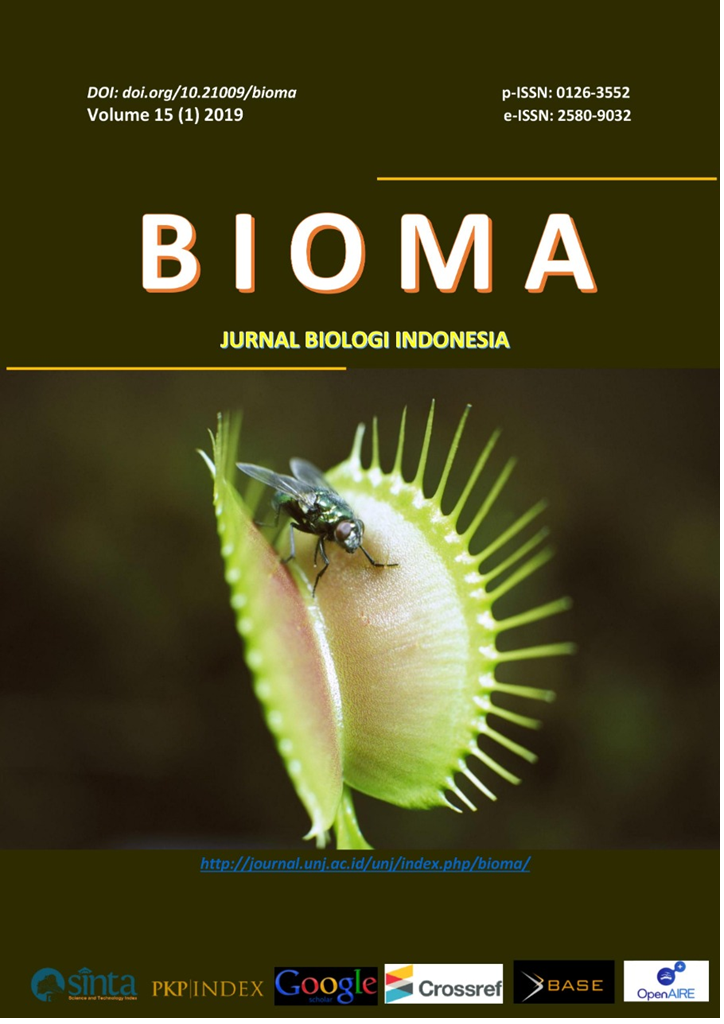PRE TREATMENT MINYAK JELANTAH DENGAN KARBON AKTIF AMPAS TEBU MENURUNKAN RESIKO HEPATOTOKSISITAS TIKUS (SPRAQUE DAWLEY)
DOI:
https://doi.org/10.21009/Bioma18(2).5Keywords:
activated, carbon, cooking oil, hepatotoxicityAbstract
Cooking oil is a human need that is increasing over time resulting in wasted cooking oil. One of the efforts to reduce negative effect of used cooking oil is the use of activated carbon in the refinery process. The aim of this study was to determine the hepatotoxicity of used cooking oil treated with activated carbon of bagasse on rat livers. The method used true experimental laboratory with Post Test Only with Control Group Design. White rats were divided into 4 treatment groups. Positive control, given 0.2 ml of used cooking oil. Negative control, given 0.2 ml of packaged cooking oil. Group 3 was given 0.2 ml of used cooking oil mixed with 5% activated carbon. Group 4 was given 0.2 ml of used cooking oil mixed with 15% activated carbon of bagasse. The liver enzyme of SGPT-SGOT was measured by spectrophotometry and analysed by ANOVA. The concentration of bagasse-activated carbon in used cooking oil affected the levels of SGOT-SGPT and rats weight. The lowest levels of SGOT were obtained in used cooking oil treated with 5% activated carbon bagasse (18.85 ± 0.544 U/L). Application of bagasse-activated carbon in used cooking oil can reduce the risk of hepatotoxicity in mice.


